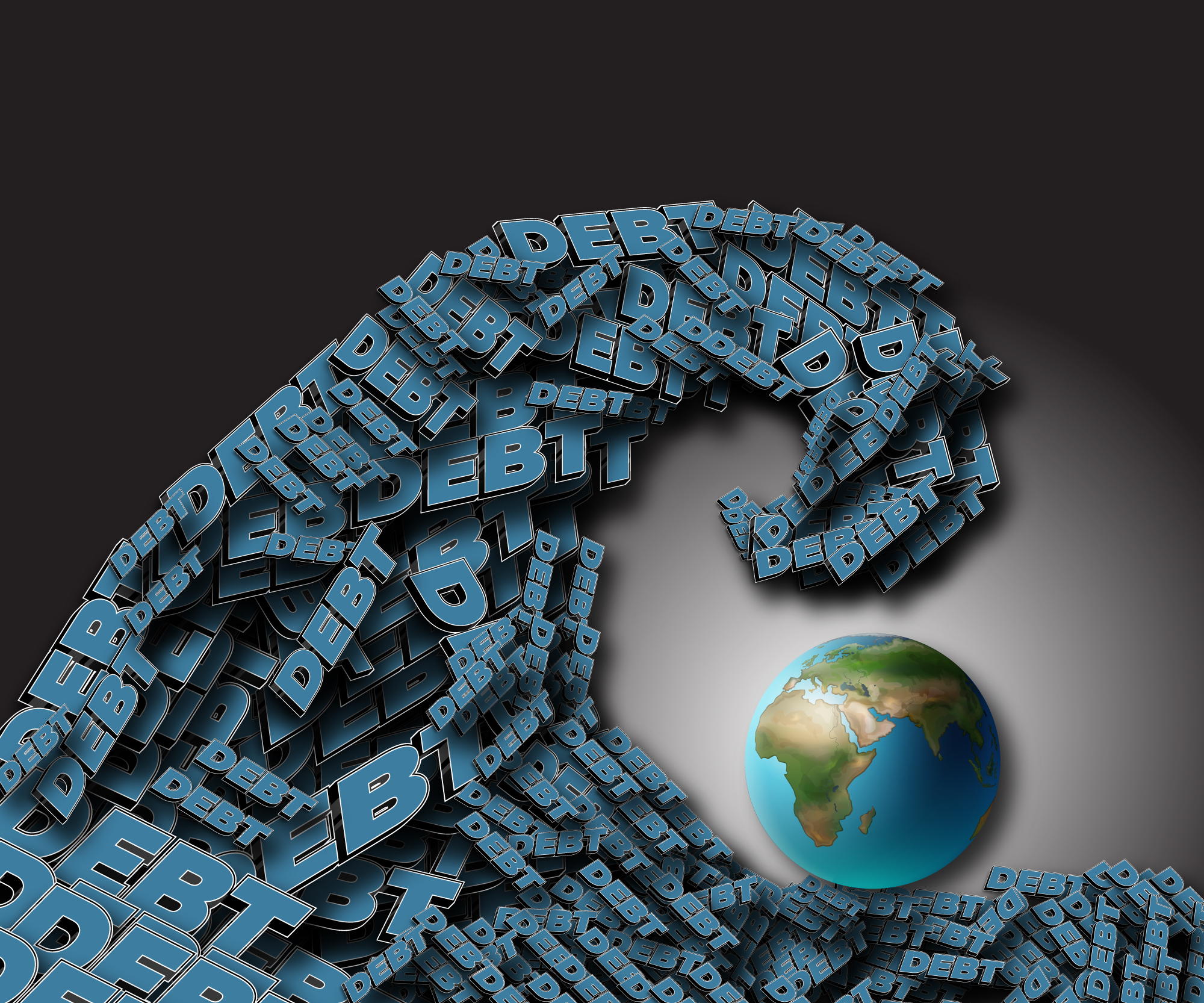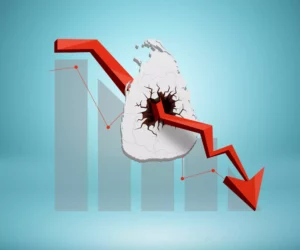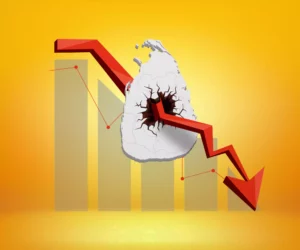
In case you haven’t heard, the global debt crisis is real. The world finds itself $266 trillion in debt to itself. If you explain this to a 5-year-old, they might laugh and ask why the world can’t cancel the debt outright. However, imagine explaining this to the head of the International Monetary Fund. They might respond in terms so accurate and complex that you are left feeling primarily confused and a little scared. Somewhat unsurprisingly, I am neither a 5-year-old nor the head of the IMF. So, this is my attempt to explain this whole situation of global debt crises to myself.
How debt works on a national level
On a highly simplistic level, national debt works similarly to personal debt. If I want something that I cannot afford, I borrow the money to get it. That puts me in debt. But that is where the similarities end.
Countries pay for various things, and that money is raised mainly through taxes. The difference between the amount spent and the amount generated is the deficit. Debt is the money that one borrows to pay off that deficit. So, national debt is not necessarily a bad thing. It is the way countries ordinarily function. But how much debt a nation accrues, how quickly, and what they spend this money on are all things that matter.
Big economies worldwide, such as France, Italy, Japan, and the UK, are now finding that their debt surpasses their GDP, which is cause for alarm. But we will get to that in another article.
Global debt crises vs debt distress
If a country has borrowed a great deal of money and is struggling because they do not have the means to repay it, it is in debt distress. The problem is that these things have a way of taking on a domino effect and affecting other countries too.
So, if many countries are in debt distress at the same time, it becomes a debt crisis. Another way to distinguish between the two terms is simply by severity. If a nation struggles to repay the debt, it is in distress. However, if things get out of hand and the country defaults on its loans, it is a crisis. These definitions can vary according to the context and who defines them.
But how do these crises come about? How do countries find themselves in a position such as this, with a mountain of debt and no way of repaying it?
The makings of global debt crises
Typically, many factors go into creating a crisis of any sort, and debt crises are no different in that regard. For example, a government might borrow money to build infrastructure in the country. They might need to build bridges, ports, airports, institutions, etc. They might also borrow money to fund specific schemes—vaccination drives or higher education, unemployment insurance, food and healthcare for civilians, etc. Other reasons why countries borrow money include the purchase of military equipment and the running costs of maintaining an army, responding to a natural disaster, and an economic stimulus.
When the growing debt combines with an increasing inability to repay the loans in time, countries might find themselves forced into borrowing from other parties to pay off the initial loans. This additional borrowing extends the timelines for the eventual repayment. The problem is that when countries struggle to repay loans, they also find it challenging to borrow more from somebody else. They often must agree to harsher terms or larger interest rates to access the money. We’ve discussed how this went down in Sri Lanka’s case previously.
At this point, many things could make the situation worse. A global recession could slow economies down, making it more difficult to generate income. A war that breaks out might affect international relations and trade.
The problems of one country could affect other countries too. Investors may also begin to question the stability of other countries with similar economic conditions. In addition, countries engaged with each other in trade could see the effects of one country’s downturn spill onto the other.
Furthermore, one must never forget that human beings run countries and governments. And human beings, no matter how powerful, have very similar emotions across the globe. For example, suppose one country builds a rather large statue. In that case, it isn’t entirely unfathomable that a neighbouring country might want to compete by building its own. An arms race, a space race, creating new technology—all of these things could lead to massively increased spending that is egged on by watching what one’s neighbours are doing.

Three waves of global debt crises
The world has seen debt crises before. For example, countries in South America went through a debt crisis as far back as the late 1800s. Still, for our purposes, we will look at three waves of global debt crises in more recent history.
The First Wave
The 1920s and 30s were an exciting time for Europe. Gripped by the horrors of “the war to end all wars” and hurtling unwittingly towards an even bigger one, this was a time of rebuilding. However, with a large portion of the population wiped out, the rebuild was not simple. The ‘losers’ of the war went entirely broke, and the ‘winners’, insofar as one can win a war, plunged deeply into debt that they could not repay large sums of money they borrowed to finance the war efforts.
The peace treaty ordered Germany to pay reparations to France and Britain so that they could pay off their debt. Although having also granted France control over one of Germany’s primary coal reserves in the Saarland, it quickly became apparent that Germany would not be able to pay. So another plan came up instead. The USA would lend money to Germany so that they could pay Britain and France so that they could pay back the USA.
Heavy war debts, hyperinflation, and the Great Depression were the hallmarks of the debt crisis that clutched much of Europe in the inter-war period.
The Second Wave
The oil crisis of the 1970s was the spark that sent countries in Latin America into a debt crisis. Countries such as Mexico, Brazil, Peru, and others were dubbed “emerging nations” in the years before the crisis. Thus, they received large loans to develop their infrastructure and systems. However, poor economic policies, over-investment, and political instability contributed to this situation. As a result, the years of the crisis are known as “the lost decade”, as many Latin American countries could not service their debt.
The Third Wave
The late 1990s saw economic havoc in countries of East Asia, such as South Korea, Malaysia, Thailand, and others. These flourishing economies suffered massive losses as severe system flaws were discovered. The actual cause of the crisis has been debated for years. However, the probable explanation is that three aspects played a part here: economic policies, a real estate bubble, and poorly regulated financial markets.
National debt, debt distress, and global debt crises—are all pertinent even today. Why? Well, because we seem to be staring down the barrel of another massive global debt crisis. The difference is that this time, it is on a scale unprecedented.



